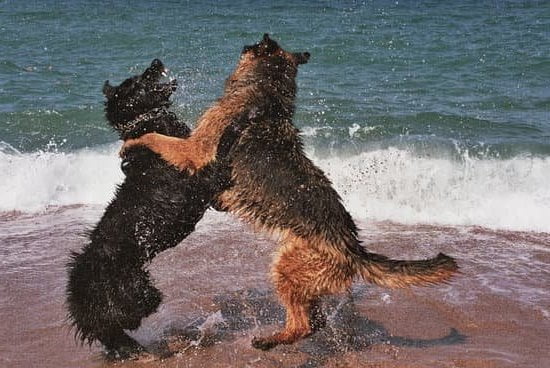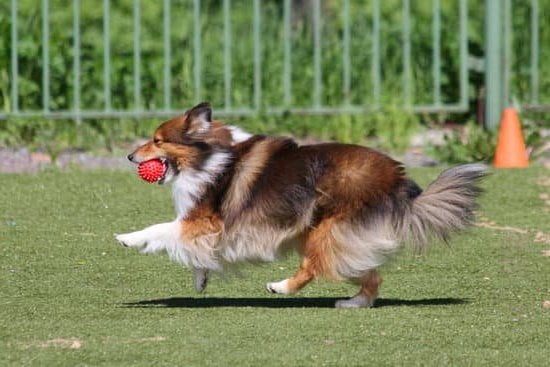A dog training leash is an essential tool for teaching your canine companion good manners and ensuring their safety during walks and outdoor activities. It provides you with control and helps to communicate effectively with your dog, ultimately contributing to a positive training experience. In this section, we will explore the significance of using a dog training leash and its role in shaping your dog’s behavior.
Using a dog training leash is crucial for guiding your dog and establishing boundaries, especially during their early stages of learning. It helps to prevent unruly behavior, as well as keep them safe from potential hazards in their environment. With the right leash and proper techniques, you can address behavioral issues like pulling, lunging, or aggression while promoting good leash manners in your furry friend.
Furthermore, a dog training leash allows you to build trust and strengthen the bond between you and your pet. By using positive reinforcement methods alongside the leash, you can effectively communicate expectations and encourage desirable behavior. This creates a harmonious walking experience for both you and your pet while fostering a sense of security and obedience.
Types of Dog Training Leashes
When it comes to dog training leashes, there are various options to choose from, each with its own advantages and considerations. Standard leashes are the most common type and come in different materials such as nylon, leather, or cotton. These leashes are a versatile choice for everyday walks and training sessions.
On the other hand, retractable leashes offer more freedom of movement and are ideal for allowing your dog to explore while still maintaining control. However, it’s important to use retractable leashes with caution as they can pose safety risks if not handled properly. Long lines are another option for leash training, providing an extended range while giving your dog more space to roam during outdoor activities.
In determining the right leash for your dog, several factors should be taken into consideration. The size of your dog is an important factor when choosing a leash – smaller dogs may do well with a lighter leash material, while larger dogs may require a sturdier option.
Additionally, your dog’s behavior and training goals play a role in selecting the appropriate leash – for example, if you are working on recall training or off-leash activities, a long line may be suitable. It’s essential to evaluate these factors in order to make an informed decision that best serves both you and your canine companion.
Proper usage of a dog training leash is crucial for effective training and handling. Regardless of the type of leash you choose, mastering the techniques for using it correctly is essential for successful training outcomes. Understanding how to maintain proper tension on the leash without causing discomfort to your dog, as well as positioning yourself in relation to your pet during walks or exercises, can greatly impact the effectiveness of your training sessions.
| Type of Leash | Advantages |
|---|---|
| Standard Leash | Versatile and suitable for everyday walks/training |
| Retractable Leash | Offers more freedom of movement without losing control |
| Long Line | Provides extended range for outdoor activities and training |
Choosing the Right Leash for Your Dog
When it comes to choosing the right dog training leash for your furry companion, there are several factors to consider in order to ensure that you have the most effective tool for your specific needs. Here are some key considerations to keep in mind:
Factors to Consider:
1. Size of the dog: The size and strength of your dog will play a major role in determining the type of leash that is most suitable. For larger and stronger breeds, a sturdy and durable leash is essential to maintain control during training sessions.
2. Behavior: Consider your dog’s behavior and temperament when selecting a leash. For dogs that tend to pull or lunge, a leash with additional features such as padded handles or dual handles may be beneficial for better control.
3. Training goals: Your specific training goals will also influence the type of leash you choose. For obedience training, a standard leash may be sufficient, while longer lines or retractable leashes can provide more freedom of movement for activities such as recall training.
It’s important to note that the ultimate goal of using a dog training leash is to ensure safety and effective communication between you and your pet. By taking these factors into account, you can select the most appropriate leash for your dog’s unique needs.
- Size of the dog
- Behavior
- Training goals
As you consider these factors, it may also be helpful to consult with a professional trainer or pet care specialist who can offer personalized recommendations based on your dog’s individual characteristics and training requirements.
- Consult with a professional trainer or pet care specialist
- Consider your dog’s individual characteristics and training requirements
- Select an appropriate leash based on expert guidance
With the right knowledge and understanding of these key factors, you can make an informed decision when choosing a dog training leash that best suits both you and your canine companion’s needs.
In summary, by carefully considering the size of your dog, their behavior, and specific training goals, along with seeking guidance from experts when necessary, you can confidently select the perfect dog training leash for effective communication and control during training sessions.
Proper Way to Use a Dog Training Leash
When it comes to using a dog training leash, it’s essential to understand the proper way to handle this tool for effective training. Whether you’re working on basic obedience or addressing specific behavioral issues, using the leash correctly is crucial for success.
One of the most important tips when using a dog training leash is to maintain a loose grip and relaxed posture. Tension on the leash can communicate stress or anxiety to your dog, which can lead to unwanted behaviors or resistance.
Another key technique for handling a dog training leash is to use positive reinforcement during walks and training sessions. Rewarding your dog for good behavior, such as walking calmly by your side or responding promptly to cues, can help reinforce desired actions. Additionally, using verbal praise and treats can strengthen the bond between you and your dog, making training more enjoyable for both of you.
It’s also important to be consistent with your handling of the leash. This includes maintaining a consistent walking pace, avoiding sudden jerks or pulls on the leash, and providing clear communication through gentle cues. Consistency in your handling will help your dog understand what is expected of them and build their confidence in following your lead.
| Proper Way to Use a Dog Training Leash | Tips and Techniques |
|---|---|
| Maintain a loose grip and relaxed posture | Use positive reinforcement during walks and training sessions |
| Be consistent with your handling of the leash | Avoid sudden jerks or pulls on the leash |
Benefits of Using a Dog Training Leash
Using a dog training leash can lead to numerous benefits for both you and your furry friend. Here are some reasons why it’s important to incorporate a dog training leash into your daily routine:
- Improved control: A dog training leash allows you to have better control over your dog, especially in crowded or unfamiliar environments. Whether you’re walking in a busy park or navigating through a street fair, having your dog on a leash ensures that they stay by your side and out of harm’s way.
- Safety: Keeping your dog on a leash helps prevent them from running into the street, approaching aggressive dogs, or getting lost in unfamiliar surroundings. It also minimizes the risk of accidents or injuries during outdoor activities.
- Communication: Using a dog training leash is an essential tool for maintaining constant communication with your pet. Through gentle tugs and commands, you can guide your dog’s behavior and reinforce positive habits during walks and outdoor adventures.
In addition to these advantages, using a dog training leash also promotes responsible pet ownership and consideration for others in public spaces. By keeping your dog on a leash, you show respect for local rules and regulations while ensuring the safety and comfort of those around you.
Ultimately, incorporating a dog training leash into your daily routine contributes to the overall well-being of both you and your canine companion. Whether you’re teaching basic obedience commands or refining advanced skills, using the right type of leash can make all the difference in achieving successful training outcomes.
Common Mistakes to Avoid When Using a Dog Training Leash
When it comes to using a dog training leash, there are several common mistakes that pet owners often make which can impede the effectiveness of their training efforts. Addressing these issues is crucial in ensuring that both you and your dog have a positive experience during leash training.
Improper Tension
One of the most common mistakes when using a dog training leash is applying improper tension. Pulling too hard on the leash can cause discomfort for your dog and may lead to resistance or pulling back. On the other hand, having too loose of a leash can lead to lack of control over your pet’s movements. It’s important to find the right balance and maintain consistent, gentle tension on the leash.
Incorrect Positioning
Another mistake to avoid when using a dog training leash is incorrect positioning. Oftentimes, pet owners may unintentionally reinforce undesirable behaviors by allowing their dog to walk ahead of them or pull on the leash. Proper positioning involves walking with your dog beside or slightly behind you, with a loose but controlled grip on the leash.
Misuse
Misusing the dog training leash can also hinder progress in your training efforts. This includes using the wrong type of leash for your specific goals, neglecting regular maintenance and checks for wear and tear, or not providing proper guidance and feedback during walks. It’s important to educate yourself on the appropriate use of different types of leashes and understand how they can aid in achieving your training objectives.
By being mindful of these common mistakes and actively working to correct them, you can significantly improve the effectiveness of your dog training sessions and strengthen the bond between you and your pet.
Training Exercises for Leash Manners
Teaching Loose Leash Walking
One of the most common issues dog owners face when it comes to leash training is their dog pulling on the leash. Teaching your dog to walk politely on a leash without pulling can be achieved through the concept of loose leash walking. Start by using a standard dog training leash and rewarding your dog for walking close to you without pulling. Gradually increase the duration and distance of walks while reinforcing this behavior with treats or verbal praise.
Focus and Engagement Exercises
Engaging your dog’s attention during walks is crucial for successful leash training. Incorporate focus and engagement exercises into your daily walks to teach your dog to pay attention to you while on-leash. Use treats, toys, or verbal cues to redirect your dog’s focus back to you whenever they get distracted or pull on the leash. Practicing these exercises consistently will help improve communication and reinforce positive behavior during walks.
Distraction Training
It’s important to prepare your dog for various distractions they may encounter while on-leash, such as other dogs, people, or environmental stimuli. Set up controlled training scenarios to expose your dog to different distractions and work on their response while on the leash. Use a long line for added safety during these sessions and gradually increase the level of distraction as your dog becomes more proficient at maintaining good leash manners.
By implementing these practical training activities, you can effectively teach your dog to walk politely on a leash and enjoy stress-free walks together. Consistency, patience, and positive reinforcement are key elements in achieving successful leash manners with your furry companion.
Troubleshooting Leash Training Problems
In conclusion, using a dog training leash is an essential tool for ensuring the safety and behavior of your canine companion. By understanding the different types of leashes available and choosing the right one for your dog’s size, behavior, and training goals, you can improve control and communication during walks. Properly using a dog training leash, including avoiding common mistakes such as improper tension or positioning, will also contribute to successful training.
One of the key benefits of using a dog training leash is improved communication with your dog, leading to enhanced safety and control during walks. By implementing training exercises for leash manners and addressing troubleshooting leash training problems such as pulling or distractions, you can work towards teaching your dog to walk politely on a leash. With patience and consistency, these challenges can be overcome, resulting in enjoyable walks with your furry friend.
In summary, the use of a dog training leash is crucial for the well-being of your pet and the success of their training. Choosing the right leash, using it correctly, and addressing any challenges that arise will lead to improved behavior and a stronger bond between you and your dog during walks.
By investing time in proper training techniques and utilizing the right tools, such as a reliable dog training leash, you can ensure that both you and your four-legged friend enjoy safe and pleasant outings together.
Frequently Asked Questions
What Is the Best Leash for Training a Dog?
The best leash for training a dog is typically a 6-foot nylon or leather leash. These materials provide durability and control, allowing the trainer to effectively communicate with the dog during training sessions.
How Do I Get My Dog to Stop Pulling on the Leash?
To get a dog to stop pulling on the leash, consistent training and positive reinforcement are key. Using techniques such as stopping when the dog pulls and rewarding them for walking without pulling can help them learn proper leash manners.
Can Dogs Be Trained Off Leash?
Yes, dogs can be trained off leash with the right skills and circumstances. Off-leash training requires a strong foundation in basic obedience commands, trust between the owner and the dog, and an understanding of any potential safety risks in the environment where training will take place.

Welcome to the blog! I am a professional dog trainer and have been working with dogs for many years. In this blog, I will be discussing various topics related to dog training, including tips, tricks, and advice. I hope you find this information helpful and informative. Thanks for reading!





